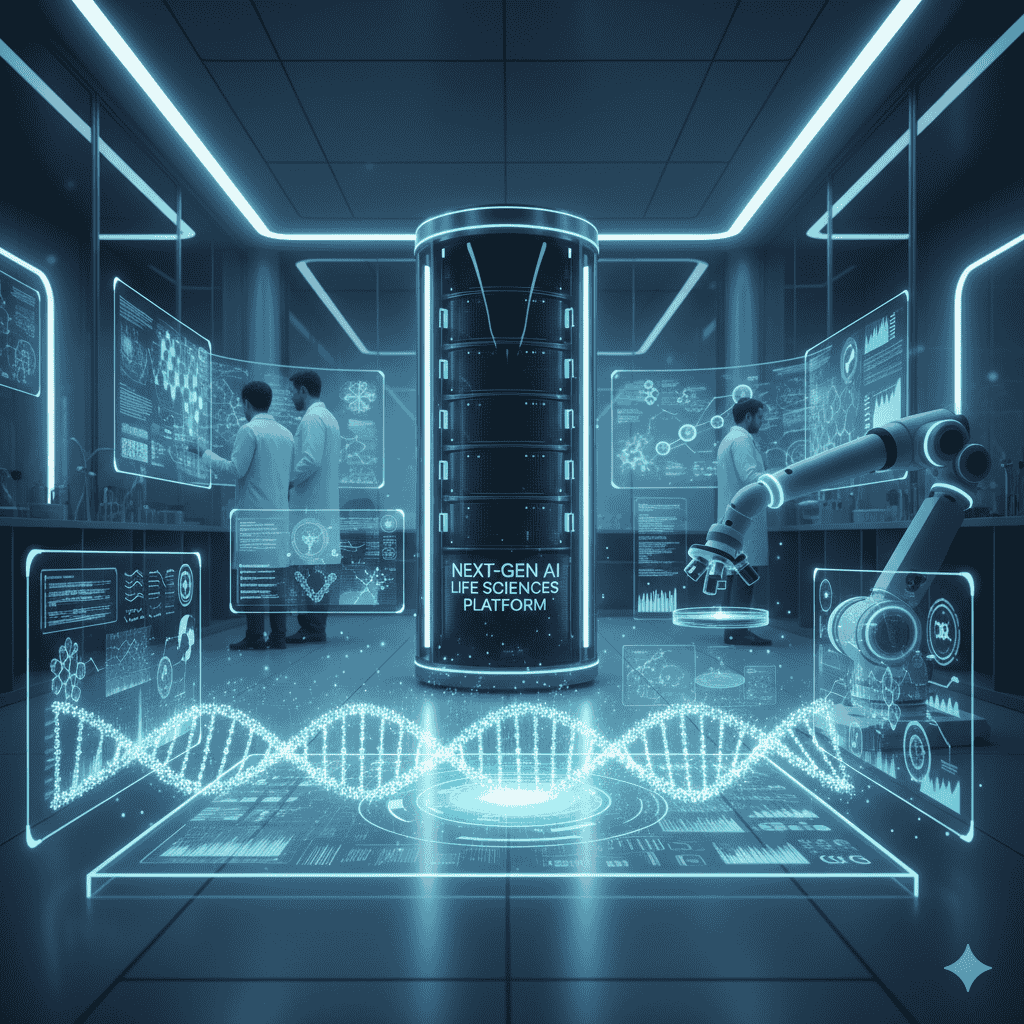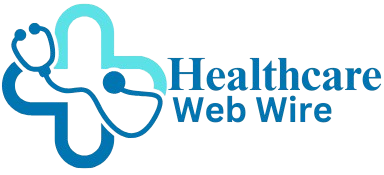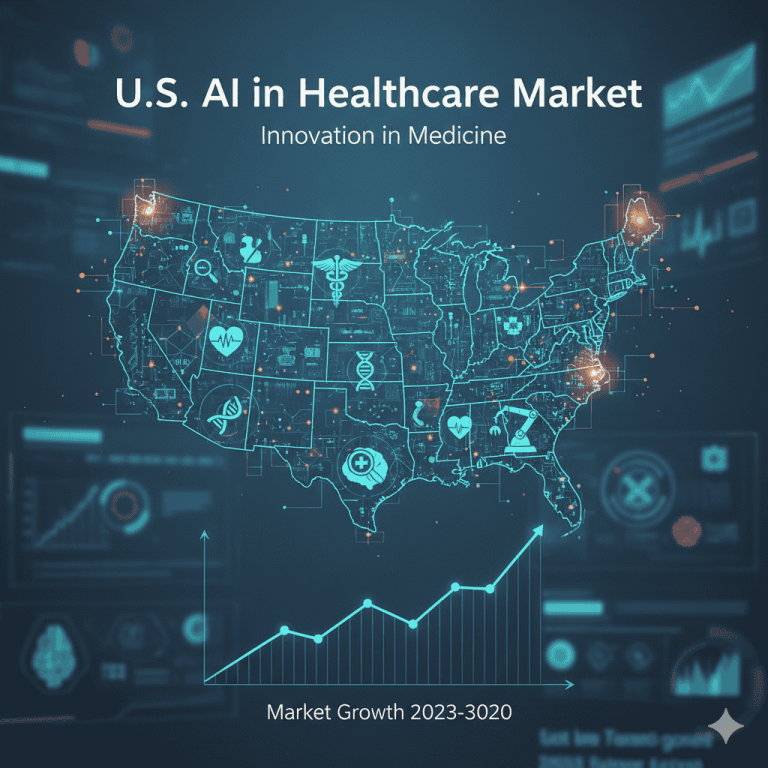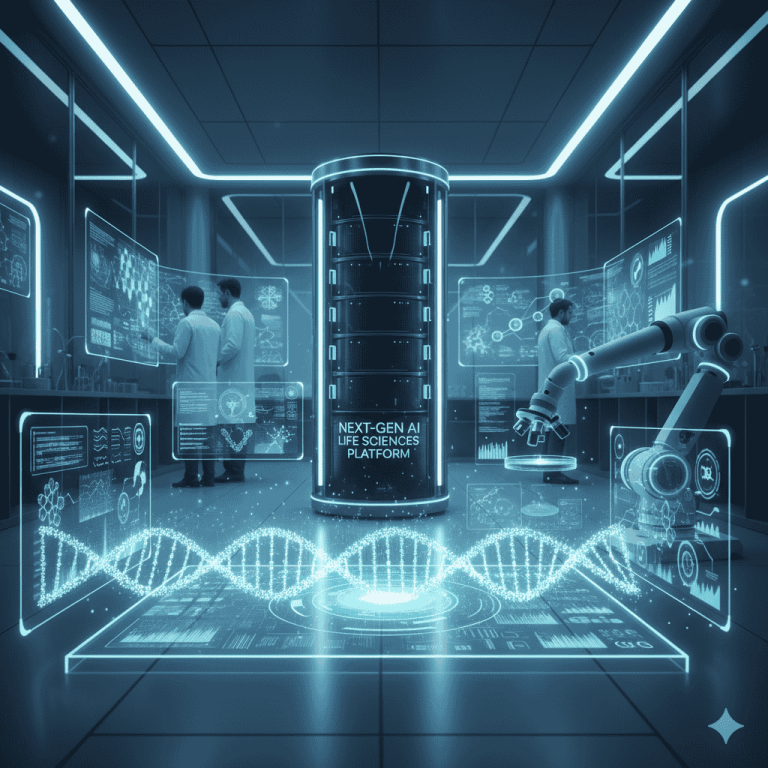Next-Generation AI in Life Sciences Market Set to Revolutionize with $100M+ Market by 2034

The global next-generation AI in life sciences market is witnessing rapid expansion, projected to reach several hundred million USD by 2034, driven by generative AI adoption, advanced cloud platforms, and strong demand in drug discovery, clinical trials, and personalized medicine.

Download the free sample and get the complete insights and forecasts report on this market @ https://www.towardshealthcare.com/download-sample/5814
Table of Contents
ToggleMarket Size
●Global Market Revenue (2024): North America led the market with 50% share in 2024.
●Forecast Revenue Growth (2025–2034): Market projected to grow several hundred million USD, supported by generative AI adoption and expansion in clinical trial automation.
Regional Contribution:
●North America: Dominant, driven by U.S. and Canada healthcare systems.
●Asia Pacific: Fastest growth at CAGR 27–30%, fueled by tech ecosystem expansion and precision medicine demand.
●Europe: Moderate growth with strong EU regulatory support and collaborative initiatives.
●AI Technology Segment Growth: Foundation models & generative AI led in 2024 (42% revenue share), expected to grow at CAGR 37%.
●Deployment Models: Cloud-based platforms dominant (58% share in 2024); hybrid AI architectures expected fastest growth (CAGR 25%).
●End-User Revenue Share: Biopharma companies lead with 54% share, AI startups & tech providers fastest-growing (CAGR 28%).
●Therapeutic Focus: Oncology largest revenue share (36% in 2024), infectious diseases fastest-growing (CAGR 26%).
●Data Source Dominance: Genomic & omics data 50% revenue share; imaging & pathology data fastest-growing (CAGR 29%).
Market Trends
Early-Stage Funding & Investments
●LogicFlo AI raised $2.7M (June 2025) to expand internationally in biotech, medtech, and pharma.
●Qualified Health raised $30M (Jan 2025) to build generative AI infrastructure, reflecting investor confidence in AI-driven life sciences.
Generative AI Integration in Healthcare Operations
●Automates clinical coding, referral letters, consultation notes, reducing administrative burden on doctors and increasing efficiency.
Drug Discovery Expansion
●AI-generated molecules and compounds accelerate novel drug development, enabling in silico trials and virtual screening.
Rise of Personalized Medicine
●AI leverages genomic, proteomic, and metabolic data to create patient-specific therapy plans.
Clinical Trial Optimization
●Synthetic patient simulation and AI-driven trial matching minimize trial costs, reduce human error, and accelerate recruitment.
Cloud-Based Deployment
●Adoption of platforms like AWS, Azure, Google Cloud ensures scalable computing, data access, and collaborative AI model development.
Hybrid AI Architectures
●Combines on-device AI computation with cloud-based processing, balancing real-time decision-making, privacy, and performance.
Cross-Sector Collaborations
●Partnerships between AI developers, biotech, pharma, and hospitals accelerate deployment and adoption.
Regulatory Alignment
●EU AI Act, Canadian Connected Care initiatives, and Indian digital health frameworks support safe and compliant AI adoption.
Rapid Digital Transformation in Asia Pacific
●Countries like China, India, Japan, Singapore integrate AI into healthcare, fostering innovation in precision medicine, diagnostics, and hospital workflow optimization.
AI Impact/Role in Life Sciences
Drug Discovery & Molecular Design
●AI predicts molecular structures, properties, and interactions to generate novel drug candidates.
Clinical Trial Simulation
●AI models virtual patients, optimizing protocols and patient recruitment, saving time and cost.
Diagnostics & Imaging
●AI-assisted histopathology, radiogenomics, and imaging analysis improve accuracy, repeatability, and early detection.
Precision Medicine
●Multi-omics AI analyses allow personalized therapy, increasing treatment efficacy.
Pharmacovigilance & AE Prediction
●AI detects adverse events and safety signals, enabling proactive patient care.
Operational Efficiency
●Automates routine tasks, reduces administrative burden, accelerates reporting, and supports real-time data interpretation.
Foundation Model Utilization
●Large generative models understand biological sequences, molecular interactions, and chemical structures holistically.
Predictive Analytics
●AI predicts patient response to therapies and disease progression, aiding clinical decision-making.
Real-World Evidence & EHR Analysis
●Integrates RWE, clinical trial data, and EHRs to guide treatment protocols and research strategies.
Global Collaboration
●AI facilitates cross-border knowledge sharing, enabling multi-site research and scalable innovation.
Regional Insights
North America
50% market share (2024) due to advanced healthcare systems and AI adoption.
U.S.:
●Strong AI ecosystem, top-tier hospitals, EHR adoption, and telemedicine infrastructure.
●Government and corporate investments support generative AI adoption in clinical trials, drug discovery, and diagnostics.
Canada:
●Connected Care Act (Bill C-72) enables data interoperability.
●National standards accelerate AI-driven clinical care integration.
Asia Pacific
●Fastest growth (CAGR 27–30%) fueled by:
●Rapid digital adoption and growing AI healthcare startups.
●China: Evidence-based digital therapeutics market ~$200–250M; regulatory support.
●India: Telemedicine, AI diagnostics, blockchain for medical data.
●Japan & Singapore: Research infrastructure and collaborations driving AI adoption.
Europe
Growth supported by:
●EU AI Act & Health Data Space regulations.
●Funding initiatives like Horizon Europe & InvestAI.
●Germany: Climedo Health, Noventi Health SE, supportive digital health legislation.
●UK: Digital literacy programs and broadband expansion for telemedicine.
Market Dynamics
Drivers
Increasing AI Adoption in Drug Discovery and Molecular Design
●Explanation: Generative AI and foundation models allow researchers to predict molecular interactions, simulate chemical reactions, and design novel compounds in silico, drastically reducing the time and cost of early-stage drug development.
●Impact: Accelerates R&D pipelines, reduces reliance on physical lab testing, and increases the probability of identifying viable drug candidates.
●Example: AI platforms like Insilico Medicine or Exscientia can generate hundreds of potential drug molecules in days, a process that previously took months.
Expansion of Healthcare Infrastructure and Hospital AI Adoption
●Explanation: Hospitals are increasingly integrating AI-driven diagnostics, patient simulation tools, and clinical decision support systems.
●Impact: Enables hospitals to optimize workflows, reduce clinical errors, and improve patient outcomes, creating a broader market for AI solutions.
●Example: Cloud-based AI solutions in oncology imaging allow radiologists to process scans faster and more accurately.
●Collaborative Innovation Between AI Firms and Life Sciences Organizations
●Explanation: Partnerships between biopharma, medtech, and AI startups accelerate adoption of AI across clinical trials, drug design, and personalized medicine.
●Impact: Encourages co-development of custom AI models, enhances knowledge transfer, and reduces risk in AI implementation.
●Example: Owkin collaborates with hospitals to optimize clinical trial simulations using federated learning, maintaining privacy while pooling datasets.
Rising Demand for Personalized and Precision Medicine
●Explanation: Patients and providers increasingly prefer treatments tailored to genomic, proteomic, and metabolic profiles.
●Impact: AI analyzes multi-omics data to predict patient responses, optimize drug regimens, and design individualized therapy plans.
●Example: Genomic AI algorithms can recommend cancer therapies based on tumor mutations, improving survival rates.
Restraints
Data Privacy and Security Concerns
●Explanation: Life sciences AI requires access to sensitive patient records, genomics, and clinical trial data, which raises privacy risks.
●Impact: Breaches can result in legal liabilities, reduced trust, and hinder adoption of AI solutions.
●Mitigation: Federated AI, encryption, and anonymization techniques can reduce risks but require investment.
Regulatory Complexity Across Countries
●Explanation: AI adoption is hindered by varying healthcare regulations, clinical trial standards, and data protection laws across regions.
●Impact: Companies face challenges in scaling AI solutions globally; compliance costs may slow innovation.
●Example: EU AI Act and GDPR regulations create strict requirements for AI in healthcare, impacting startups targeting multi-country deployment.
Opportunities
●Expansion of Personalized Medicine Using Multi-Omics Data
●Explanation: AI can process complex genomic, transcriptomic, proteomic, and metabolomic datasets to enable precision therapies.
●Impact: Offers significant commercial potential in oncology, rare diseases, and metabolic disorders.
Cloud and Hybrid AI Models for Scalable, Secure Solutions
●Explanation: Cloud platforms offer massive computational power, while hybrid AI ensures sensitive data remains on-premise for privacy.
●Impact: Accelerates model training, deployment, and global collaboration without compromising data security.
Emerging Markets in Asia Pacific and Latin America
●Explanation: Rapid digitalization, large populations, and rising healthcare expenditure create fertile ground for AI adoption.
●Impact: Opportunity for AI companies to enter high-growth markets, particularly in telemedicine, diagnostics, and precision medicine applications.
Top 10 Companies
NVIDIA (Clara, BioNeMo)
●Overview: Leader in GPU-powered AI infrastructure; Clara provides AI tools for healthcare, BioNeMo for molecular design.
●Strengths: High-performance computing, scalability, integration with cloud platforms.
●Strategic Impact: Accelerates AI model training and enables global research collaborations.
Google DeepMind (AlphaFold, MedPaLM)
●Overview: AlphaFold predicts 3D protein structures; MedPaLM supports clinical reasoning.
●Strengths: Advanced AI algorithms, access to extensive datasets, proven accuracy in molecular prediction.
●Impact: Revolutionizes structural biology and clinical decision-making.
Insilico Medicine
●Overview: AI-driven drug discovery platform focused on generative chemistry.
●Strengths: Deep learning for molecular generation, virtual screening, and target identification.
●Impact: Reduces early drug development timelines dramatically.
Recursion Pharmaceuticals
●Overview: Uses AI for disease modeling and high-throughput screening.
●Strengths: Combines experimental biology with machine learning to predict therapeutic efficacy.
●Impact: Streamlines drug candidate prioritization, lowering R&D costs.
Exscientia
●Overview: Automated drug discovery and molecule optimization.
●Strengths: AI-powered chemical space exploration, strong partnerships with pharma.
●Impact: Accelerates drug design, minimizes trial-and-error, enhances success probability.
BenevolentAI
●Overview: AI platform for therapeutic discovery and target identification.
●Strengths: Computational biology expertise, data integration across genomics, proteomics.
●Impact: Supports rapid identification of promising drug candidates.
Owkin
●Overview: Clinical trial optimization using predictive modeling and federated learning.
●Strengths: Privacy-preserving collaboration, AI for patient stratification.
●Impact: Reduces clinical trial costs and improves patient recruitment accuracy.
Atomwise
●Overview: AI-driven molecular screening for drug candidates.
●Strengths: Predictive binding affinity analysis, virtual screening at scale.
●Impact: Identifies promising molecules faster than traditional methods.
PathAI
●Overview: AI platform for digital pathology and histology analysis.
●Strengths: Accurate biomarker detection, improved diagnosis consistency.
●Impact: Enhances pathologist decision-making and reduces diagnostic errors.
Valo Health
●Overview: End-to-end AI integration across drug discovery, development, and patient care.
●Strengths: GenAI platform, holistic lifecycle approach, data-driven decision support.
●Impact: Streamlines R&D, accelerates regulatory compliance, improves patient outcomes.
Latest Announcements
Trinity Life Sciences (June 2025)
●Detail: GenAI applied to Medical Affairs, Value & Access, and Field Sales.
●Impact: Enables non-technical staff to leverage AI for operational efficiency, economic value, and improved decision-making.
●Strategic Insight: Adoption of GenAI in commercial life sciences operations highlights shift from R&D-only AI applications to enterprise-wide operational impact.
Salesforce (May 2025)
●Detail: Established life sciences partner network for GenAI & Agentforce deployment.
●Impact: Accelerates AI adoption in pharma and medtech, enabling seamless integration of AI tools into existing workflows.
●Strategic Insight: Enterprise AI partnerships reduce adoption barriers, improve scalability, and encourage multi-use AI applications across commercial and operational functions.
Indegene (Feb 2025)
●Detail: Launched Cortex, a generative AI platform targeting commercial life sciences.
●Impact: Supports real-world application of AI in market access, patient engagement, and therapy adoption strategies.
●Strategic Insight: Expansion of AI beyond research into commercial lifecycle demonstrates AI maturity and broad utility in life sciences.
Recent Developments
LogicFlo AI Raises $2.7M for Biotech, Medtech, Pharma Expansion (June 2025)
●Overview: LogicFlo AI secured early-stage funding to expand internationally into life sciences sectors.
Impact:
●Enables deployment of AI-driven platforms for drug discovery, patient simulation, and clinical operations.
●Supports cross-border expansion to biotech, pharmaceutical, and medtech companies, facilitating global adoption of AI solutions.
●Strategic Insight: This investment reflects growing investor confidence in AI platforms that bridge research and operational applications in life sciences.
●Qualified Health Raises $30M for Generative AI Infrastructure (Jan 2025)
Overview: Funding supports development of AI infrastructure tailored for healthcare and life sciences.
Impact:
●Development of robust generative AI pipelines for molecular design, patient data analysis, and predictive modeling.
●Supports scalability, allowing AI algorithms to process large datasets in genomics, clinical trials, and real-world evidence (RWE).
●Strategic Insight: Highlights the emphasis on infrastructure as a critical factor for successful AI deployment in life sciences.
Generative AI Adoption in Clinical Trial Simulation, Molecular Design, and EHR Analysis
●Clinical Trial Simulation: AI models virtual patient cohorts, predicting outcomes and optimizing trial designs, reducing costs and increasing efficiency.
●Molecular Design: AI generates candidate molecules, predicts binding affinities, and simulates interactions with biological targets.
●EHR Analysis: AI extracts insights from electronic health records to improve personalized treatment plans, detect adverse events, and monitor patient response.
●Impact: These applications reduce time-to-market, improve research accuracy, and enable evidence-based clinical decision-making.
Foundation Model Integration to Streamline Research and Regulatory Processes
●Overview: Foundation models integrate vast datasets across genomics, chemical structures, and clinical trials.
Impact:
●Accelerates regulatory submission processes by predicting trial outcomes and optimizing documentation.
●Reduces duplication of efforts in R&D by providing cross-domain insights.
●Example: AI platforms can pre-fill regulatory forms or optimize trial design using predictive algorithms, saving months of manual work.
Digital Health Legislation Supports AI Adoption in Canada, China, Europe, and India
●Canada: Bill C-72 facilitates healthcare data interoperability, enabling AI-driven decision support.
●China: Regulations promote digital therapeutics and clinical AI implementation.
●Europe: EU AI Act and Health Data Space ensure safe AI adoption while fostering innovation.
●India: Government initiatives encourage telemedicine, AI-powered diagnostics, and blockchain-based medical records.
●Impact: Regulatory support is critical for scalable and compliant AI deployment, reducing barriers for multinational adoption.
Segments Covered
A. AI Technology Type
Foundation Models & Generative AI
●Role: Lead segment in the market; accelerate drug discovery, molecular design, clinical trial optimization, and patient simulation.
Impact:
●Predicts molecular structures, interactions, and treatment outcomes.
●Supports discovery of novel drug candidates in silico.
●Example: Exscientia and Insilico Medicine leverage generative AI to generate candidate molecules faster than traditional methods.
Multimodal Models & Reinforcement Learning
●Role: Analyze multiple types of data simultaneously—imaging, genomics, proteomics, and clinical notes.
Impact:
●Enables synthetic patient simulation for clinical trial planning.
●Improves prediction of patient outcomes and treatment efficacy.
●Example: AlphaFold (DeepMind) combines sequence data with 3D structure prediction for protein modeling.
Federated & Privacy-Preserving AI
●Role: Allows multiple hospitals or research centers to collaborate without sharing raw patient data.
Impact:
●Ensures compliance with privacy laws while pooling large datasets for robust AI model training.
●Supports multi-center clinical trial analysis without risking sensitive data breaches.
B. Deployment Type
Cloud Platforms
●Role: Provide scalable computational power and storage for large datasets and AI models.
Impact:
●Reduces infrastructure costs, accelerates model training and deployment.
●Allows global collaboration across research and healthcare centers.
●Example: AWS, Azure, and Google Cloud support AI pipelines for life sciences research.
Hybrid Architectures
●Role: Combine on-device AI processing with cloud computation.
Impact:
●Ensures real-time decision-making in hospitals while maintaining data privacy.
●Optimizes computation load distribution, reducing latency.
●Example: AI-driven imaging analysis can be processed locally in clinics while large-scale simulations run in the cloud.
C. End Users
Biopharma Companies
●Role: Lead revenue share; use AI extensively in R&D, regulatory submission, and clinical trial optimization.
Impact:
●Reduces time and cost for drug development.
●Enhances compliance and regulatory accuracy.
AI Startups & Tech Providers
●Role: Fastest-growing segment; develop innovative AI tools for drug discovery, diagnostics, and precision medicine.
Impact:
●Drive technology innovation, providing specialized AI platforms for niche applications.
●Collaborate with hospitals and pharma to implement AI solutions in real-world scenarios.
D. Therapeutic Areas
Oncology
●Role: Largest revenue share; AI assists in diagnosis, treatment planning, and predictive analytics.
Impact:
●Enhances accuracy of imaging, tumor detection, and therapy selection.
●Supports personalized cancer therapy based on genomics and proteomics.
Infectious Diseases
●Role: Fastest-growing segment; AI supports epidemiology, outbreak prediction, and drug/vaccine development.
Impact:
●Predicts disease spread and patient outcomes.
●Enables rapid development of targeted treatments during pandemics or epidemics.
E. Data Sources
Genomic & Omics
●Role: Dominant data source; crucial for AI-driven multi-omics analysis.
Impact:
●Enables biomarker discovery, patient stratification, and personalized treatment planning.
●Provides the backbone for AI models in drug discovery and precision medicine.
Imaging & Pathology
●Role: Fastest-growing data source; AI enhances diagnostic accuracy.
Impact:
●Automates histopathology, radiogenomics, and imaging analysis.
●Reduces human error and improves reproducibility in clinical decisions.
Top 5 FAQs
What is the market size of next-generation AI in life sciences?
●Dominated by North America (50% share in 2024), expected to grow several hundred million USD by 2034.
Which AI technology type is leading the market?
●Foundation models & generative AI, with 42% revenue share in 2024 and CAGR 37%.
What is the fastest-growing regional market?
●Asia Pacific, with CAGR ~27–30%, driven by tech adoption and healthcare digitization.
Which end-user segment leads the market?
●Biopharmaceutical companies with 54% revenue share, leveraging AI for R&D and regulatory tasks.
What is the role of AI in drug discovery?
●AI generates novel molecules, simulates patient populations, predicts outcomes, and streamlines clinical trials to reduce cost and time.
Access our exclusive, data-rich dashboard dedicated to the life sciences sector – built specifically for decision-makers, strategists, and industry leaders. The dashboard features comprehensive statistical data, segment-wise market breakdowns, regional performance shares, detailed company profiles, annual updates, and much more. From market sizing to competitive intelligence, this powerful tool is one-stop solution to your gateway.
Access the Dashboard: https://www.towardshealthcare.com/access-dashboard
Immediate Delivery Available | Buy This Premium Research @ https://www.towardshealthcare.com/price/5814
Become a valued research partner with us – https://www.towardshealthcare.com/schedule-meeting
You can place an order or ask any questions, please feel free to contact us at sales@towardshealthcare.com
Powering Healthcare Leaders with Real-Time Insights: https://www.towardshealthcare.com/healthcare-intelligence-platform
Europe Region – +44 778 256 0738
North America Region – +1 8044 4193 44
APAC Region: +91 9356 9282 04
Web: https://www.towardshealthcare.com
Find us on social platforms: LinkedIn | Twitter | Instagram | Medium | Pinterest




